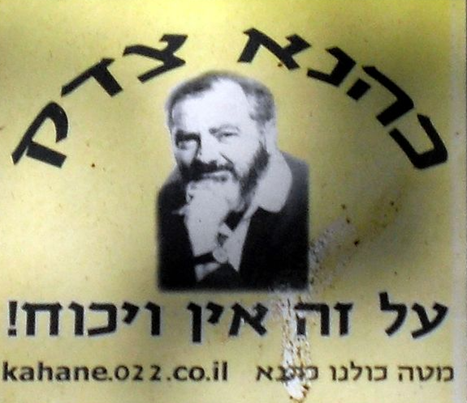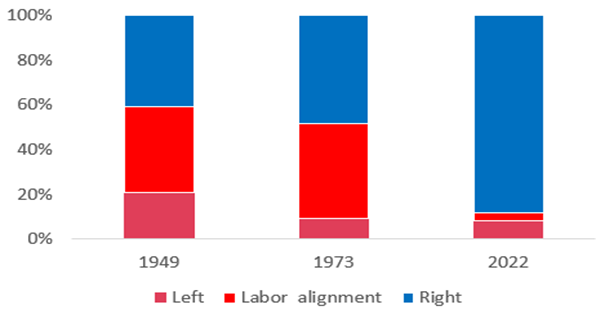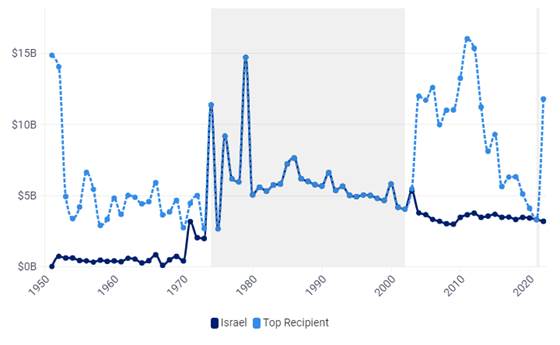Rise of US Military Aid, Fall of Israeli Labor Party
Politics / Israel Nov 04, 2023 - 06:11 PM GMTBy: Dan_Steinbock
 The Nightmare after 50 Years of Failed Military Policies
The Nightmare after 50 Years of Failed Military Policies
Israeli occupation and far-right settlers are subverting Israeli democracy. The rise of US military aid has resulted in the fall of the Israeli Labor Party. Meanwhile, neoliberal policies are polarizing the economy, politics and society.
Since the 1970s, the concern of the Israeli peace activists was that if the Messianic far-right Jewish settlers, many of whom came from the US, would be permitted to create a substantial de facto presence, it would be legitimized over time by de jure measures.
a substantial de facto presence, it would be legitimized over time by de jure measures.
In the 1980s, religious far-right settler movements like Gush Emunim radicalized further forming the Jewish Underground, a radical terrorist organization. Two issues contributed to its creation: the Camp David Accords leading to the 1979 Egypt-Israel peace treaty, which the movement violently opposed, and the settlement project itself, which brought the Messianic Jews in close proximity with Palestinian communities.
Through the first half of the 1980s, the Underground conducted several vicious terror attacks, including car bombs against Palestinian mayors, and plotted to blow up the Dome of the Rock at the center of the al-Aqsa mosque. The idea was to exploit terror to drive Palestinians out of the occupied territories.
I had no doubts of these extremist trajectories after a mid-‘70s meeting in Jerusalem with the U.S.-born rabbi Meir Kahane, the far-right ultra-nationalist politician and later a member of the Knesset until his conviction of terrorism. Having co-founded the far-right Jewish Defense League in the U.S., Kahane established the ultra-radical Kach in Israel. Both used terror to advance their aims.
"Kahane was right, about this there can be no debate!"
 |
|
A not-so-subtle reference to the need for ethnic cleaning in the Occupied Territories (Sticker in Jerusalem, 2010)
Source: Wikimedia Commons (France)
Fast forward to November 1990. As I was walking to Grand Central, I heard shots and saw a man running. Kahane had been assassinated in midtown-Manhattan. But his spirit lived on. Just four years later Yigal Amir assassinated Israeli prime minister Yitzhak Rabin. Amir was associated with religious extremists influenced by Kahanism. Like the current Hamas offensive, the Rabin assassination was attributed to an "intelligence failure." The Israel Security Agency (ISA, or Shin Bet) could have stopped the killer in advance. Was the assassination “allowed” to happen by the far-right that had most to gain from it?
In a sense, Rabin's assassination was the Israeli mirror-image of the prior Sadat's assassination, which has been attributed to the Egyptian Islamic Jihad. Their members later figured among the fedayeen in Afghanistan that were armed, trained and financed by the CIA's Operation Cyclone. Whatever the case, the assassinations’ message to peacemakers was loud and clear: Don’t even try!
Two Peace Accords, Two Assassinations
Pr
President Anwar Sadat, President Jimmy Carter and Prime Minister Menachem Begin at Camp David on Sep. 17, 1978 |
Prime Minister Yitzhak Rabin, U.S. President Bill Clinton, and PLO's leader Yasser Arafat at the Oslo Accords signing ceremony on Sep. 13, 1993 |
Sources: Wikimedia Commons
The rise of the Messianic far-right, intimately linked with the settler project, and the demise of the peace movement, closely associated with the political left, occurred in parallel with the plunge of Israeli Labor Party and the rise of U.S. economic and military aid.
Plunge of the labor alignment, rise of US aid and neoliberalism
During the early days of independence, Israel’s politics was dominated by labor alignments from David Ben-Gurion to Golda Meir. In 1949, the labor alignment (46) and the left (25) had over 70 seats in Knesset, the 120-member parliament. Despite near monopoly, the labor (51)-left (11) coalition still held over 60 seats in 1973. In other words, labor had increased its voice, whereas the left had lost half of its seats.
Today, those days are ancient history. The labor coalition has lost more than 90% of its representation some 75 years ago.
Fall of Israeli labor coalitions since 1974

Sources: Author, data from Israel’s Knesset
The debate on the decline of Israeli labor is long-lasting. Usually, the losses are attributed to the failure of the Oslo Accords to make Israelis feel more secure, inability of the alignment to attract labor voters, failure to stay attuned to demographic shifts, and the overall decline of social democratic parties in Western Europe.
Most analysts fail to associate the parallel trends of the plunge of Israeli labor and the rise of U.S. aid. The erosion hasn’t been gradual and incremental, but disruptive. Even the air triumphs of the Six-Day War were still premised on the French-made Mirage and Super Mystere jets. The US economic and military aid soared only after the 1973 War. Until 2002, Israel was the top recipient of U.S. aid, and it has stayed among the top three with Iraq, Afghanistan, and Ukraine. U.S. has given Israel over $260 billion in military and economic aid, and $10 billion more for missile defense systems.
U.S. aid to Israel since 1950

Sources: ForeignAssistance.gov
For decades a key player in cementing this tie (and undermining the Israeli labor) has been Netanyahu who has led six Israeli cabinets in the past 25 years, typically with the financial support of American-Jewish billionaire financiers. Unsurprisingly, many members of his party remain haunted by corruption charges. Through a decade, Netanyahu has faced a litany of bribery, fraud and breach of trust charges. Hence, his struggle to stay in power to retain immunity and avoid prosecution.
Israel economy’s new long-term woes
Despite U.S. aid, the Israeli economy is today more polarized than ever before. Even before the Hamas War, economic growth was slowing. Risks to the outlook were tilted to the downside and risks to inflation to the upside. Continued uncertainty about the judicial reform presented another notable downside risk. Both have been exacerbated by the Hamas War, which Netanyahu has pledged will continue long.
Worse, due to neoliberal growth policies that Netanyahu has long advocated, Israel has relatively high inequality compared to other OECD countries, despite its early socialism. Long-term trends are alarming. In May, 280 senior economists warned the government’s budget allocations to the ultra-religious Haredi-groups, in exchange for their coalition support, “will transform Israel in the long run from an advanced and prosperous country to a backward country.”
If the Hamas War threatens to exacerbate Israel’s social and economic tensions, it risks to turn Gaza into a desert and the West Bank into a Jewish suburbia.
Dr. Dan Steinbock is the founder of Difference Group and has served at the India, China and America Institute (US), Shanghai Institute for International Studies (China) and the EU Center (Singapore). For more, see http://www.differencegroup.net/
© 2023 Copyright Dan Steinbock - All Rights Reserved
Disclaimer: The above is a matter of opinion provided for general information purposes only and is not intended as investment advice. Information and analysis above are derived from sources and utilising methods believed to be reliable, but we cannot accept responsibility for any losses you may incur as a result of this analysis. Individuals should consult with their personal financial advisors.
Dan Steinbock Archive |
© 2005-2022 http://www.MarketOracle.co.uk - The Market Oracle is a FREE Daily Financial Markets Analysis & Forecasting online publication.


